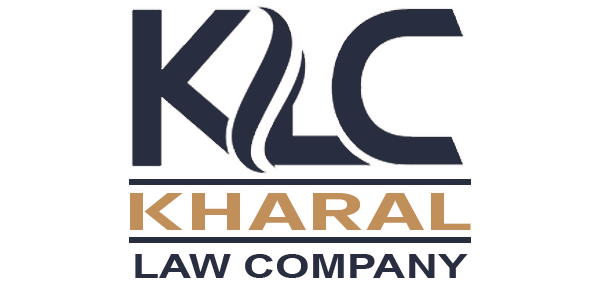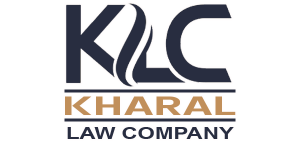Get ShipBob WMS to reduce mis-picks, save time, and improve productivity. FIFO is also the option you want to choose if you wish to avoid having your books placed under scrutiny by the IRS (tax authorities), or if you are running a business outside of the US. Learn more about what LIFO is and its impact on net income to decide if LIFO valuation is right for you.
Other inventory accounting methods
This makes it easier to accurately account for your inventory and maintain proper FIFO calculations. Some companies choose the LIFO method because the lower net income typically leads to lower income taxes. However, it is more difficult to calculate and may not be compliant under certain jurisdictions. It may also understate profits, which can make the business less appealing to potential investors. Using the FIFO method makes it more difficult to manipulate financial statements, which is why it’s required under the International Financial Reporting Standards.
- FIFO operates on the principle that the first items added to inventory are the first to be sold.
- Hence, the first 150 units were taken from June and the remaining 100 from May.
- The First-In, First-Out (FIFO) method assumes that the first unit making its way into inventory–or the oldest inventory–is the sold first.
- The value of your ending inventory will then be based on the most recent inventory you purchased.
- This means that LIFO could enable businesses to pay less income tax than they likely should be paying, which the FIFO method does a better job of calculating.
- This guide has provided a comprehensive overview, from the basics and advantages to practical examples and challenges.
Cost Accuracy
For some companies, there are benefits to using the LIFO method for inventory costing. For example, those companies that sell goods that frequently increase in price might use LIFO to achieve a reduction in taxes owed. In some cases, a business may not actually sell or dispose of its oldest goods first. Comparing Inventory Valuation Methods FIFO and Last-In, First-Out (LIFO) are prominent inventory valuation methods. Understanding the differences between them is crucial in choosing the most suitable approach for your business. The price on those shirts has increased to $6 per shirt, creating another $300 of inventory for the additional 50 shirts.
- FIFO is also the option you want to choose if you wish to avoid having your books placed under scrutiny by the IRS (tax authorities), or if you are running a business outside of the US.
- Under the FIFO Method, inventory acquired by the earliest purchase made by the business is assumed to be issued first to its customers.
- If you wonder how much is your inventory value, you can use our great online FIFO calculator to find it out.
- It also does not offer any tax advantages unless prices are falling.
- To calculate the Cost of Goods Sold (COGS) using the LIFO method, determine the cost of your most recent inventory.
- At the end of the year, you want to record the cost of the inventory you’ve sold, as an expense of doing business, which is deducted from your sales.
Track and manage time
To calculate your ending inventory you would factor in 20 shirts at the $5 cost and 50 shirts at the $6 price. So the ending inventory would https://mylektsii.ru/9-37483.html be 70 shirts with a value of $400 ($100 + $300). The average cost method is the simplest as it assigns the same cost to each item.
Bonus Depreciation vs. Section 179 for Small Businesses
This method is also known as the weighted average and is calculated over a specific time period. Simple to use, whether a business or purchasing or producing goods, the end net income is a balance between FIFO and LIFO. It’s also the most accurate method of aligning the expected cost flow with the actual flow https://arma2academy.ru/news/410-eksperty-predskazali-rost-ceny-bitkoina-na-etoi-nedele.html of goods. It reduces the impact of inflation, assuming that the cost of purchasing newer inventory will be higher than the purchasing cost of older inventory. Typical economic situations involve inflationary markets and rising prices. Let’s say you sold 4,000 units during the year, out of the 5,200 produced.
Alternatives to the FIFO method
- Specific inventory tracing is only used when all components attributable to a finished product are known.
- This is used for cost flow assumption purposes, the method in which costs are removed from a business’s inventory and reported as the cost of sold products.
- You must use the same method for reporting your inventory across all of your financial statements and your tax return.
- If you’re a business that has a low volume of sales looking for the most amount of detail, specific inventory tracing has the insight you’ll need.
- Though it’s one of the easiest and most common valuation methods, FIFO can have downsides.
First-In, First-Out Process To implement FIFO, follow a systematic process. This involves tracking the chronological order of inventory inflows and outflows, ensuring the oldest units are recorded as sold first. Higher Accuracy in Cost of Goods Sold Implementing FIFO brings the advantage of aligning cost calculations with actual expenses. By matching current costs with recent revenues, businesses can make informed decisions and maintain financial transparency. FIFO is the best method to use for accounting for your inventory because it is easy to use and will help your profits look the best if you’re looking to impress investors or potential buyers. It’s also the most widely used method, making the calculations easy to perform with support from automated solutions such as accounting software.
In contrast to the FIFO inventory valuation method where the oldest products are moved first, LIFO, or Last In, First Out, assumes that the most recently purchased products are sold first. In a rising price environment, this has the opposite effect on net income, where it is reduced compared to the FIFO inventory accounting method. Keeping track of all incoming http://www.ofmusic.ru/accords/7440/8371.html and outgoing inventory costs is key to accurate inventory valuation. Try FreshBooks for free to boost your efficiency and improve your inventory management today. The first in, first out (FIFO) cost method assumes that the oldest inventory items are sold first, while the last in, first out method (LIFO) states that the newest items are sold first.
As can be seen from above, the inventory cost under FIFO method relates to the cost of the latest purchases, i.e. $70. As you may have noticed above, with the FIFO method, the ending inventory value will mainly depend on the price change of the units bought over time. Please note how increasing/decreasing inventory prices through time can affect the inventory value. During the CCC, accountants increase the inventory value (during production), and then, when the company sells its products, they reduce the inventory value and increase the COGS value. The FIFO valuation method generally enables brands to log higher profits – and subsequently higher net income – because it uses a lower COGS.
Also, LIFO is not realistic for many companies because they would not leave their older inventory sitting idle in stock while using the most recently acquired inventory. The Last-In, First-Out (LIFO) method assumes that the last or moreunit to arrive in inventory is sold first. The older inventory, therefore, is left over at the end of the accounting period. For the 200 loaves sold on Wednesday, the same bakery would assign $1.25 per loaf to COGS, while the remaining $1 loaves would be used to calculate the value of inventory at the end of the period. The First-In, First-Out (FIFO) method assumes that the first unit making its way into inventory–or the oldest inventory–is the sold first.


